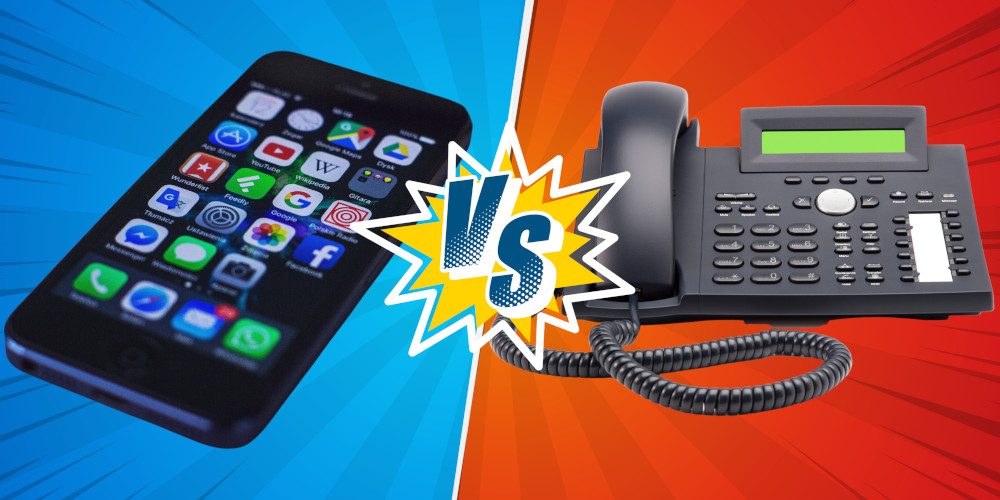In the past decade, business communication has undergone a remarkable transformation driven by technological innovations and changing work dynamics. Traditional communication methods have given way to digital alternatives, emphasising speed, flexibility, and efficiency. Mobile communication and the rise of remote work have introduced unprecedented flexibility, enabling professionals to stay connected from anywhere. Unified communication systems, cloud-based tools, and collaboration platforms have redefined how teams interact and collaborate, breaking down geographical barriers and enabling global cooperation. Amidst this transformation, businesses face a significant choice: hardphones or softphones? Hardphones offer reliability and tactile feedback, while softphones are cost-effective, feature-rich, and mobile. This article explores the advantages and drawbacks of each to help businesses make informed decisions aligning with their unique needs.
Hardphones: The Classic Choice
Reliability and Durability: Hardphones are known for their durability and reliability. They are designed to withstand the wear and tear of daily office use, making them a trusted option for businesses that require a consistent and robust connection.
Tactile Feedback: Many users prefer the tactile feedback of physical buttons and handsets that hardphones offer. The physical presence of these devices can contribute to a sense of familiarity and comfort.
Voice Quality: Hardphones often deliver excellent voice quality, thanks to their dedicated hardware and infrastructure. This is essential for businesses that depend on crystal-clear communication.
Security: Hardphones are generally considered more secure, as they are less susceptible to software vulnerabilities and hacking. They also don’t rely on the same internet connection as softphones, which can be a security concern for some businesses.
Limited Mobility: A drawback of hardphones is their limited mobility. They are typically stationary and tethered to a physical location, which may not be suitable for businesses with remote or mobile workers.
Softphones: The Modern Solution
Flexibility and Mobility: Softphones offer unparalleled mobility and flexibility. They can be installed on computers, laptops, smartphones, and tablets, allowing users to make and receive calls from virtually anywhere with an internet connection.
Cost-Efficiency: Softphones are cost-effective, as they eliminate the need for additional hardware. They can run on existing devices, reducing initial setup costs.
Feature-Rich: Softphones often come with a wide range of features, such as video calling, instant messaging, and integration with other software applications. This can enhance productivity and streamline communication.
Upgrades and Updates: Softphones can receive software updates and feature enhancements more easily than hardphones. This means your business can adapt to the latest technology trends without investing in new hardware.
Internet Dependency: Softphones rely on internet connectivity, which can be a drawback if the internet connection is unreliable or experiences downtime. This dependency may affect call quality.
Making the Choice
The decision between softphones and hardphones largely depends on the unique requirements and circumstances of your business. Here are some factors to consider when making your choice:
Work Environment: Evaluate whether your employees work in a fixed office location, require mobility, or work remotely. Different situations may call for different devices.
Budget: Consider your budget for communication technology. Softphones tend to be more cost-effective in terms of hardware expenses.
Security: If your business deals with sensitive information and security is a top concern, hardphones may be the safer choice.
Features: Determine which features are crucial for your business communication needs. Softphones often offer a broader range of features and integrations.
Scalability: Consider the ease of scaling your communication system as your business grows. Softphones are often more scalable due to their software-based nature.
User Preferences: It’s essential to gather input from your employees to understand their preferences and needs regarding communication tools.
In conclusion, the choice between softphones and hardphones is not a one-size-fits-all decision. Each has its advantages and drawbacks, and the best choice for your business depends on your unique circumstances. Some businesses may find that a combination of both hardphones and softphones provides the ideal balance of reliability, mobility, and features. Ultimately, the key to success is selecting the communication tools that best suit your organisation’s goals and requirements.
Contact Us Today for Specialist Guidance and Solutions!
Send us your contact info and we will call you back. Alternatively, contact us at your convenience.

